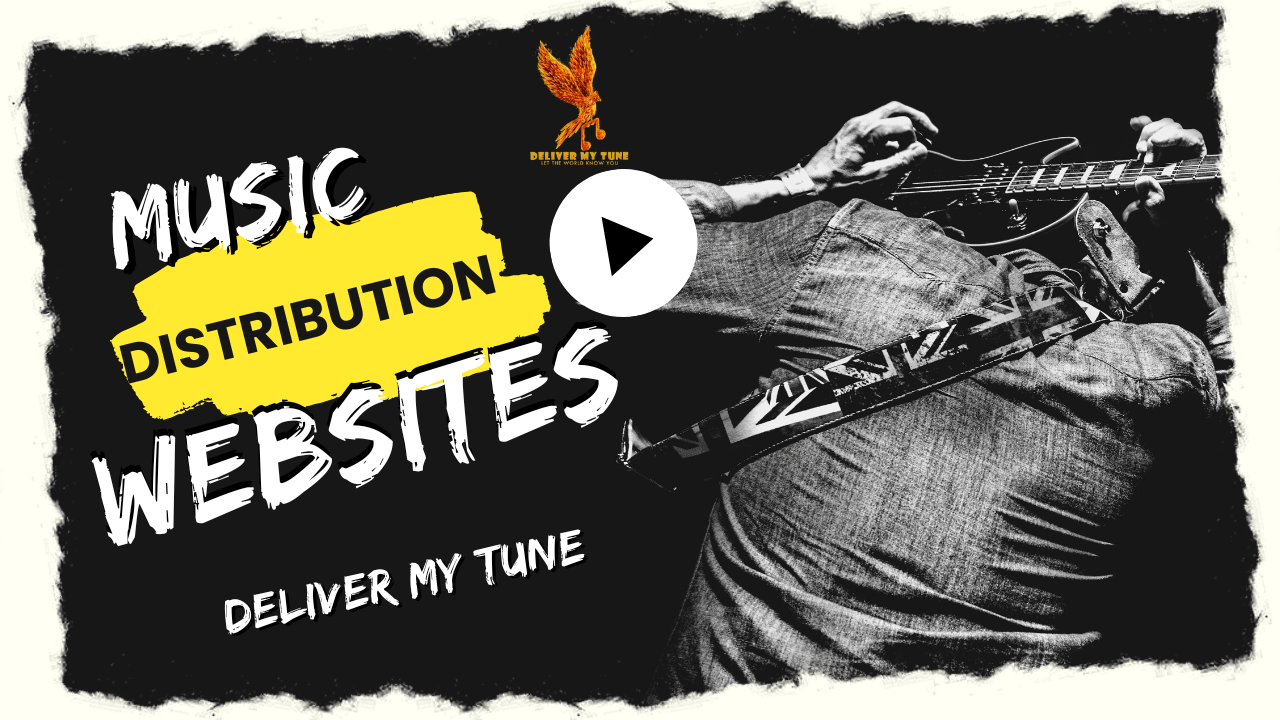The music industry has transformed in recent years, and at the forefront of this revolution are music distribution websites. These platforms are essential for independent artists, labels, and creators who want their music heard on major streaming platforms like Spotify, Apple Music, and Amazon Music.
But what exactly are music distribution websites, and why do they matter? Simply put, these platforms act as intermediaries that connect your music to listeners worldwide. They handle uploading your tracks to multiple platforms, managing royalties, and providing promotional tools to boost your visibility.
This guide dives deep into the world of music distribution platforms, comparing the top services available, and helping you choose the right one for your needs.
Why Are Music Distribution Websites Essential?
Gone are the days when you needed a record label to get your music into stores or on the radio. In today’s digital-first era, music distribution platforms empower independent artists by providing the tools they need to manage their careers.
Key Benefits of Music Distribution Websites:
- Global Reach: Your music can be distributed to over 150+ streaming platforms, ensuring fans worldwide can access it.
- Control Over Royalties: Many platforms allow artists to keep 80-100% of their royalties, offering a fairer deal than traditional labels.
- Ease of Use: Uploading music, artwork, and metadata has never been easier, even for beginners.
- Analytics and Insights: Real-time data helps you understand how your music performs across different platforms.
- Cost-Effective Marketing: Most platforms include tools for playlist pitching, pre-save campaigns, and social media integration.
Whether you’re an aspiring musician or an established artist looking for new opportunities, understanding the role of music distribution websites is critical to your success.
Features to Look for in Music Distribution Websites
Choosing the right music distribution platform involves evaluating several critical factors. Each platform has unique features and caters to different needs. Here’s what to look for:
1. Platform Reach
Ensure the distribution service sends your music to all major platforms like Spotify, Apple Music, Deezer, Amazon Music, and regional platforms like Saavn or Boomplay.
2. Royalty Split
Understand how royalties are shared. Some platforms like DistroKid allow you to keep 100% of your royalties, while others may take a percentage.
3. Pricing Structure
Choose a platform that fits your budget. Some platforms charge annual fees, others take a percentage of your earnings, and a few offer free distribution with limitations.
4. Turnaround Time
The speed of getting your music on platforms is crucial, especially if you’re planning a release tied to an event or marketing campaign.
5. Promotional Tools
Look for features like playlist pitching, pre-save links, and social media integration that help maximize your music’s reach.
6. Additional Services
Value-added services like AI mastering, artwork creation, and ISRC/UPC codes can save you time and money.
7. Customer Support
Reliable and fast customer support is essential, especially when you encounter technical issues or need guidance.
Top 10 Music Distribution Websites in 2024
1. DistroKid
DistroKid is a favorite among independent artists for its affordable pricing and straightforward approach.
- Key Features:
- Unlimited uploads for a flat yearly fee.
- Collaborative royalty splits.
- Easy integration with platforms like YouTube and TikTok.
- Who Should Use It: Solo artists and small labels looking for budget-friendly distribution.
2. TuneCore
TuneCore is one of the oldest and most reliable distribution platforms, offering comprehensive services for artists.
- Key Features:
- Transparent royalty payments (100% retention).
- In-depth analytics and reporting.
- Marketing tools for social media campaigns.
- Who Should Use It: Artists focused on royalties and detailed reporting.
3. CD Baby
CD Baby is a full-service distribution platform that also offers publishing and sync licensing.
- Key Features:
- One-time fee per release with no recurring charges.
- YouTube monetization and sync licensing options.
- Physical distribution options for CDs and vinyl.
- Who Should Use It: Artists looking for a mix of digital and traditional distribution.
4. Deliver My Tune
This platform is gaining traction, especially in India and globally, for its transparent pricing and lifetime distribution plans.
- Key Features:
- Lifetime distribution for a one-time fee.
- Free ISRC codes and cover art creator.
- AI mastering services.
- Who Should Use It: Artists wanting cost-effective, long-term solutions.
5. Amuse
Amuse provides both free and premium plans, making it an excellent choice for emerging artists.
- Key Features:
- Mobile-friendly app for easy uploads.
- Free distribution with optional premium upgrades.
- Fair royalty splits.
- Who Should Use It: New artists testing the waters of music distribution.
6. Symphonic Distribution
A boutique service tailored to mid-level and professional artists, Symphonic Distribution provides premium tools.
- Key Features:
- Advanced analytics and insights.
- Exclusive playlist pitching.
- Support for custom label setups.
- Who Should Use It: Artists and labels looking for a high-touch service.
7. RouteNote
RouteNote is an affordable option with flexible plans.
- Key Features:
- Free distribution with revenue-sharing.
- Premium plans for higher royalty retention.
- Detailed tracking and reporting.
- Who Should Use It: Independent artists who want flexibility in pricing.
8. Repost by SoundCloudIf you’re a SoundCloud artist, this platform provides seamless integration with additional distribution options.
- Key Features:
- Playlist pitching for SoundCloud’s own network.
- Robust analytics and insights.
- Monetization tools for SoundCloud streams.
- Who Should Use It: Artists with a strong SoundCloud presence.
9. Landr
Originally a mastering service, Landr has expanded into music distribution.
- Key Features:
- AI-powered mastering alongside distribution.
- Affordable subscription plans.
- Metadata management for improved discoverability.
- Who Should Use It: Artists who prioritize mastering and technical quality.
10. UnitedMasters
This modern platform focuses on empowering artists with branding and data insights.
- Key Features:
- Opportunities for brand partnerships.
- Exclusive tools to manage fan relationships.
- Mobile-first design for ease of use.
- Who Should Use It: Artists looking for business development opportunities.
Trends in Music Distribution for 2024
The world of music distribution websites is evolving rapidly. Staying ahead of these trends can help you maximize your success:
- AI-Driven Tools: From mastering services to playlist recommendations, AI is making music distribution smarter and more efficient.
- Direct-to-Fan Engagement: Features like pre-save campaigns and Countdown Pages (popularized by Spotify) allow artists to engage fans before releases.
- Integrated Marketing: Platforms are bundling social media management and promotion to offer a one-stop shop for artists.
- Video Content: The rise of YouTube Shorts and Instagram Reels emphasizes the need for video integration within music marketing.
How to Choose the Right Music Distribution Website
- Define Your Goals: Are you looking for reach, royalties, or marketing tools?
- Understand the Costs: Assess annual fees, revenue shares, or one-time charges.
- Consider Additional Services: Look for features like sync licensing, publishing, or AI mastering.
- Check Reviews: User feedback provides insights into the platform’s reliability.
- Experiment: Test multiple platforms to find what works best for your career.
Final Thoughts
Music distribution websites are more than just tools; they are gateways to your audience. By selecting the right platform, you not only amplify your music’s reach but also set the foundation for a sustainable career.
Platforms like Deliver My Tune and DistroKid make distribution simple, while others like TuneCore offer a more tailored experience. Whether you’re a new artist or an established name, there’s a platform designed for you
Related Articles:
For further reading, explore these related articles:
- Promoting Music on JioSaavn: A Complete Guide for Independent Artists
- Maximizing Your Earnings: A Comprehensive Guide to JioSaavn Artist Royalties
- Maximize Your Music Career with JioSaavn Artist Dashboard: A Comprehensive Guide
For additional resources on music marketing and distribution, visit Deliver My Tune.






